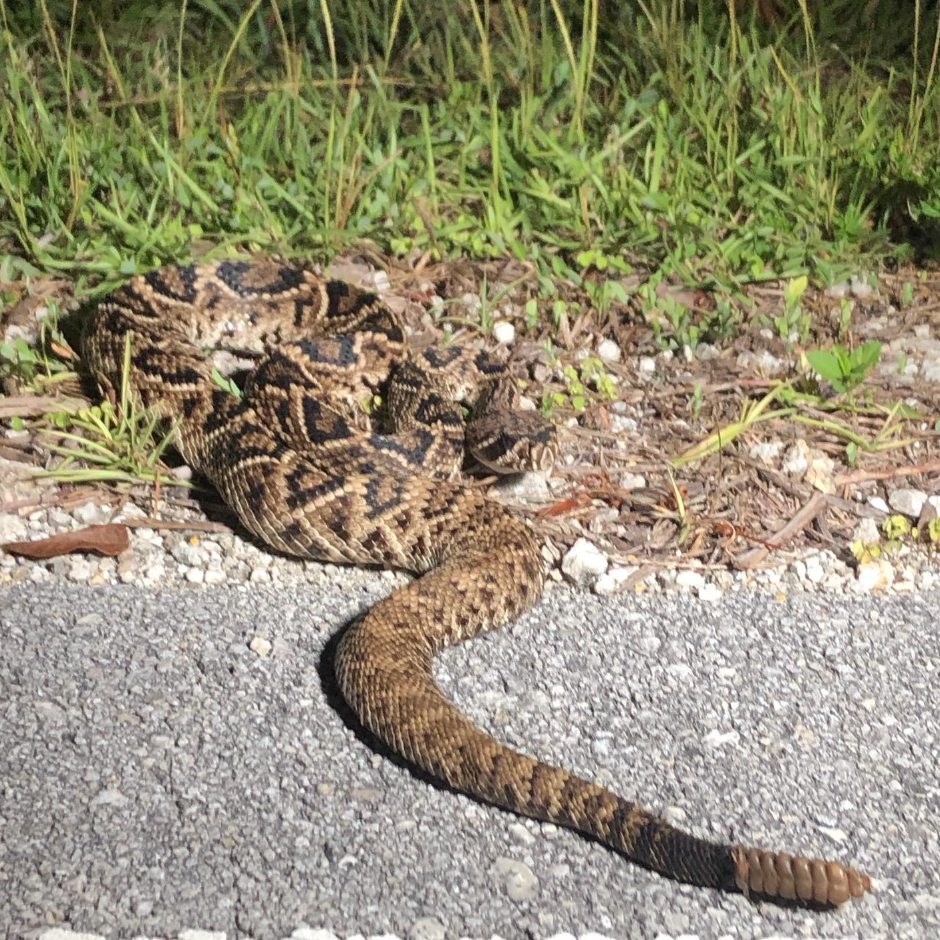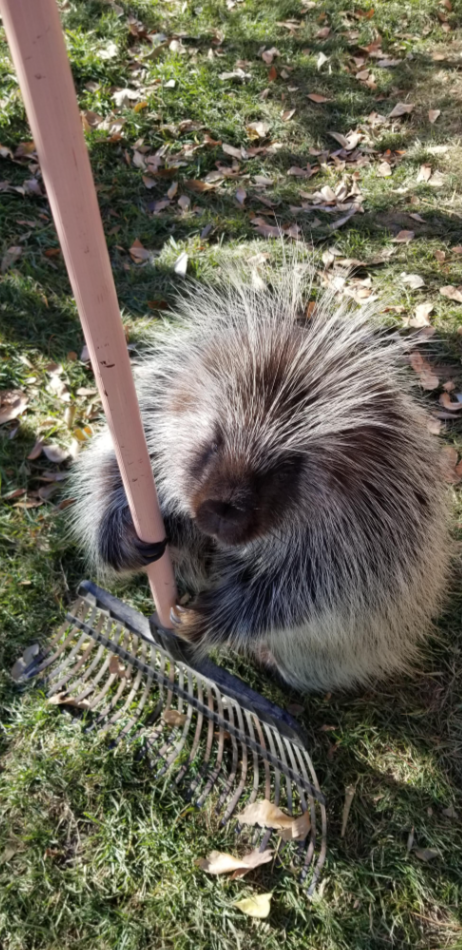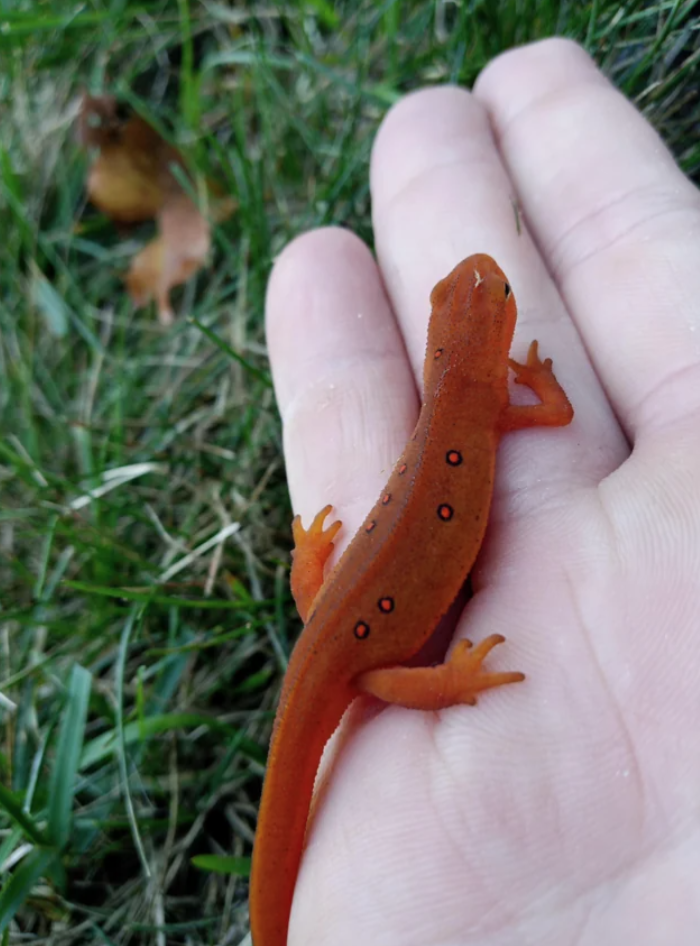1. Mountain Lion (Cougar)

Image Source: Reddit
Picture this: the elusive mountain lion, also known as the cougar, silently roams our backyards in North America's rugged landscapes. This majestic feline is an apex predator found across the continent, from the Rockies to the Appalachians. Habit loss has meant their numbers have declined; however, they're not considered endangered. Interestingly, they're known to be solitary creatures, and their haunting calls can send shivers down your spine.
2. Raccoon

Image Source: Reddit
Meet the mischievous raccoon, a charismatic critter often spotted in urban and rural settings throughout the U.S. and Canada. With their distinct black mask and ringed tail, raccoons are expert foragers. They've quickly adapted to city life, sometimes venturing into trash cans for a midnight snack. Although not endangered, raccoons remind us of the resilient wildlife that shares our spaces.
3. Coyote

Image Source: Reddit
The haunting yips of coyotes echo through North America's open spaces, from deserts to forests. These adaptable canines are skilled hunters and can be found coast to coast. They're not listed as endangered, thanks to their resourceful nature. Did you know that coyotes have expanded their range due to the decline of other predators? They're a true testament to nature's balance.
4. Skunk

Image Source: Reddit
The notorious skunk – known for its distinctive odor and bold black-and-white stripes. Found in the nooks of suburban yards and wooded areas, skunks use their scent as a defense mechanism. Though they might not be everyone's favorite visitor, skunks play a role in controlling insect populations. Lucky for us, they're not in danger, so we can appreciate their uniqueness.
5. Red Fox

Image Source: Reddit
A flash of red in the twilight – it's the red fox, a creature of cunning charm. These adaptable hunters thrive across North America, from rural fields to urban neighborhoods. Red foxes boast a diverse diet, from rodents to fruits. While not endangered, they sometimes struggle with habitat fragmentation. Their bushy tails and inquisitive nature make them backyard stars.
6. Timber Rattlesnake

Image Source: Reddit
Slithering into the conversation is the timber rattlesnake, a true native of the eastern United States. These venomous serpents are a part of our natural landscape, often found in wooded and rocky habitats. While they are essential in controlling rodent populations, their numbers are declining. Remember, it's best to admire them from a safe distance.
7. Bald Eagle

Image Source: Reddit
The symbol of freedom, the bald eagle soars majestically across American skies. They were once nearly extinct, but they have made a mighty comeback! These raptors can be spotted near lakes and rivers, where they hunt fish. Did you know that a bald eagle's nest can weigh up to a ton? They're a breathtaking sight, embodying the spirit of our nation's wilderness.
8. Great Horned Owl

Image Source: Reddit
As the sun sets, the great horned owl emerges – a silent predator of the night. These owls inhabit diverse habitats, from forests to deserts. Their signature tufted "horns" and powerful talons make them formidable hunters. While not endangered, they play an important role in their ecosystem. Hearing their haunting calls can send shivers down your spine.
9. Alligator (in southern regions)

Image Source: Reddit
Venturing south, we encounter the American alligator, a prehistoric relic patrolling wetlands and marshes. Primarily found in the Southeastern U.S., alligators are a conservation success story. Once threatened, they now thrive due to protective measures. These reptiles are apex predators, and their ancient lineage reminds us of the fascinating history of our backyard habitats.
10. Moose

Image Source: Reddit
Up north in the wilds of Canada and some northern U.S. states, the moose reigns as a true wilderness giant. With their imposing size and impressive antlers, moose are a sight to behold. Although not endangered, they face challenges from habitat loss and climate change. Fun fact: a moose's antlers can span up to 6 feet, making them both majestic and intriguing residents of our backyards.
11. Gray Wolf

Image Source: Reddit
Roaming the wilds of North America, the gray wolf is an embodiment of the untamed spirit. With their eerie howls and pack dynamics, they're the stuff of legends. Once driven to the brink, wolf populations have rebounded in many regions. Their presence fosters a balance in ecosystems, reminding us of nature's intricate web. They communicate with one another using a variety of vocalizations, body postures, and facial expressions!
12. Eastern Diamondback Rattlesnake

Image Source: Reddit
Slithering through the southeastern U.S., the eastern diamondback rattlesnake commands attention with its distinctive diamond pattern. Its potent venom and rattle warn off potential threats. Sharing a landscape with this reptile requires caution and respect. A true predator, this rattlesnake plays a vital role in controlling rodent populations. Did you know, this the largest venomous snake in North America?!
13. Canada Lynx

Image Source: Reddit
In the remote forests of North America, the elusive Canada lynx prowls silently. Distinguished by its tufted ears and thick fur, this feline is well adapted to snowy landscapes. Its diet primarily consists of snowshoe hares, showcasing its role as a skilled hunter. Spotting a lynx is a rare treat for those lucky enough to venture into their territory.
14. Eastern Box Turtle

Image Source: Reddit
Meet the eastern box turtle, a charming reptile that wanders woodlands and grassy fields. Recognized by its hinged shell, this turtle can "box" itself in for protection. A slow and steady pace characterizes its movements. Encountering one reminds us of the resilient creatures that thrive in our backyard ecosystems. Eastern Box Turtles also have an extraordinary sense of direction and smell!
15. Porcupine

Image Source: Reddit
The porcupine leads a prickly existence in the treetops of North America's forests. Armed with quills as its defense, this herbivore spends its days munching on leaves, bark, and other vegetation. Remarkably, a porcupine's quills have tiny barbs that make them difficult to remove once embedded. Their presence adds a touch of intrigue to our backyard habitats.
16. Fisher

Image Source: Reddit
Hailing from the northern woods, the fisher is a fierce predator with a lustrous fur coat. Often mistaken for a cat, this carnivore preys on small mammals. Remarkably agile, fishers can climb trees and even hunt porcupines. While their name might suggest a preference for fish, fishers are actually opportunistic predators that feed on a wide range of prey. Their enigmatic behavior and role in the food chain make them a captivating part of our natural landscape.
17. Eastern Screech Owl

Image Source: Reddit
As the sun sets, the eerie trills of the eastern screech owl fill the night air. These petite predators are well adapted to life in woodlands and suburban areas. Their cryptic plumage provides excellent camouflage. The gray morph blends in with the bark of trees and provides excellent camouflage against tree trunks, while the red morph matches the colors of autumn leaves and can remain well-hidden among foliage. With their large eyes and haunting calls, they're a mysterious presence that enchants our moonlit nights.
18. Gila Monster

Image Source: Reddit
Venturing into the arid American Southwest, we encounter the unique Gila monster. This venomous lizard is known for its vivid orange and black coloration. Slow-moving and solitary, it hunts for small prey and eggs. They're not usually a bit threat to humans, but it's worth being cautious around them. Their presence is a testament to the adaptability of desert ecosystems. Due to how they store fat, they can survive for months with no food!
19. Black Widow Spider

Image Source: Reddit
The black widow spider spins its intricate webs in nooks and crannies across North America. Identified by its shiny black body and red hourglass marking, this venomous arachnid is best admired from a distance. While its venom is potent, fatalities are rare. A master of silk and stealth, the black widow is a fascinating yet cautious backyard inhabitant.
20. Brown Recluse Spider

Image Source: Reddit
Hiding in the shadows of basements and sheds, the brown recluse spider can be identified with a violin-shaped marking. While its venom can cause necrotic skin lesions in some cases, bites are generally infrequent. This nocturnal hunter prefers a quiet existence away from human activity. Understanding their habits reminds us of the intricate tapestry of life in our backyards.
21. Northern Copperhead Snake

Image Source: Reddit
In the wooded nooks of North America, the northern copperhead snake blends seamlessly with fallen leaves. Its distinctive coppery coloration and hourglass patterns make it a striking sight. While venomous, it prefers to avoid confrontation. The copperhead's role as an essential predator in our ecosystems showcases the delicate balance of nature. Would you like to find one of these in our backyard?
22. Wolverine

Image Source: Reddit
In the wild expanses of the far north, the wolverine reigns as a fierce and solitary predator. Known for their strength and stamina, these creatures are perfectly adapted to snowy landscapes. Wolverines scavenge and hunt, often taking on animals larger than themselves. Their elusive nature adds an air of mystery to the remote regions they call home.
23. Eastern Chipmunk

Image Source: Reddit
Darting across lawns and under bushes, the eastern chipmunk is a charming backyard resident. With their cheek pouches for storing food, these small rodents are avid gatherers. Their energetic antics, including leaping and scampering, and distinctive chip-chip-chip calls remind us of the bustling life that thrives right outside our windows, adding a touch of nature's vibrancy to our daily surroundings. Whether they're zipping around in search of seeds or playfully interacting, these chipmunks offer a delightful glimpse into the intricate rhythms of the natural world.
24. Northern Water Snake

Image Source: Reddit
In wetlands and along waterways, the northern water snake easily slips through aquatic environments. Often mistaken for venomous species, these harmless serpents play an essential role in controlling fish and amphibian populations. Their varied colors and patterns make them a fascinating study of adaptation, and they're quite the sight in the wild.
25. Eastern Cottonmouth Snake

Image Source: Reddit
Venturing into the southeastern U.S., we encounter the eastern cottonmouth snake, also known as the water moccasin. This venomous snake is often found in and around bodies of water. Its namesake cotton-white mouth serves as a warning display. Despite their intimidating reputation, cottonmouths generally prefer retreat over confrontation. Their ability to move through water makes them excellent at hunting for prey!
26. Armadillo

Image Source: Reddit
Hailing from the southern states, the armadillo stands out with its armored appearance. These insectivores use their sharp claws to dig for food, leaving distinctive burrows in their wake. Despite their prehistoric look, armadillos are relatively recent immigrants to North America. Their quirky behavior and appearance make them an unexpected backyard sight.
27. Northern Flying Squirrel

Image Source: Reddit
Under cover of night, the northern flying squirrel takes to the skies using a unique membrane between its legs. These nocturnal gliders are found in forests across North America. They have a penchant for fungi, fruits, and nuts, contributing to forest ecosystem dynamics. Spotting these elusive creatures is a rare treat for those who venture out after dark.
28. White-Tailed Deer

Image Source: Reddit
This has to be one of the cutest looking deers around, don't you think? The white-tailed deer is found all over North America, and, if you live in a neighborhood close to forestry, you shouldn't be surprised to see one of these animals walking around your backyard. Interestingly, these deers are actually pretty good swimmers, and can easily cross lakes and rivers.
29. Eastern Newt (Red Eft)

Image Source: Reddit
Exploring the woodlands, we may encounter the eastern newt in its vibrant red eft stage. This amphibian's striking color serves as a warning to potential predators. Over time, they transform into aquatic adults, becoming olive-green and returning to water bodies. Their unique life cycle showcases the wonders of adaptation. Eastern Newts go through three distinct stages: the aquatic larval stage, the terrestrial red eft stage, and the aquatic adult stage.
30. North American Black Bear

Image Source: Reddit
The North American black bear roams with quiet authority among the towering trees and tranquil forests. These omnivores have a wide-ranging diet, from berries to small mammals. With a keen sense of smell, they're excellent foragers. While generally shy and elusive, black bears occasionally search for food in urban areas. Their presence is a testament to the wild heart that beats within our surroundings.





























